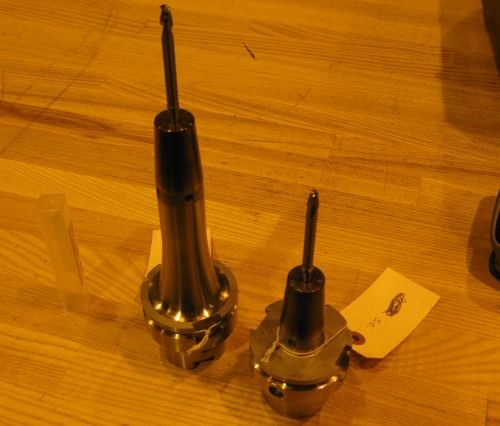Which of These Tools is More Stable?
The photo shows two combinations of tool and toolholder that are used in the same machine.
Share



ECi Software Solutions, Inc.
Featured Content
View More


Hwacheon Machinery America, Inc.
Featured Content
View More


The photo shows two combinations of tool and toolholder that are used in the same machine. Which of these tool sets will permit heavier cutting? The shorter, more rigid one? Maybe not!
The actual answer depends on the machine. At higher spindle speeds, the heaviest depths of cut are possible near the natural frequencies of the machining system—and that system includes the machine, toolholder and tool. Sometimes, less rigid tools contribute to a dynamic system capable of a higher metal removal rate.
Warner Robins Air Force Base discovered this very thing. The base’s machine shop is “tap testing” all of its high speed machining centers to find their optimal machining parameters for every standard tool set. On one of the shop’s machines, more aggressive milling is possible with the longer of the two tools seen here. This article explains.
The phenomenon has an interesting application. It is actually possible to “tune” your productivity by adjusting the tool overhang length.
Question: Has your shop had experience with finding and applying harmonic frequencies in high speed machining? What kind of results have you seen? E-mail your reply.
































.png;maxWidth=300;quality=90)






